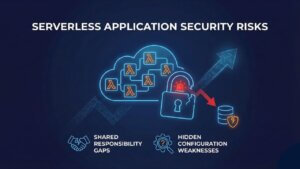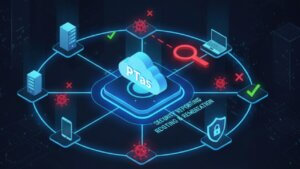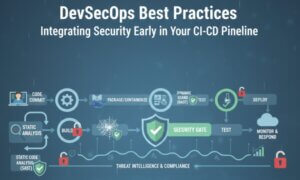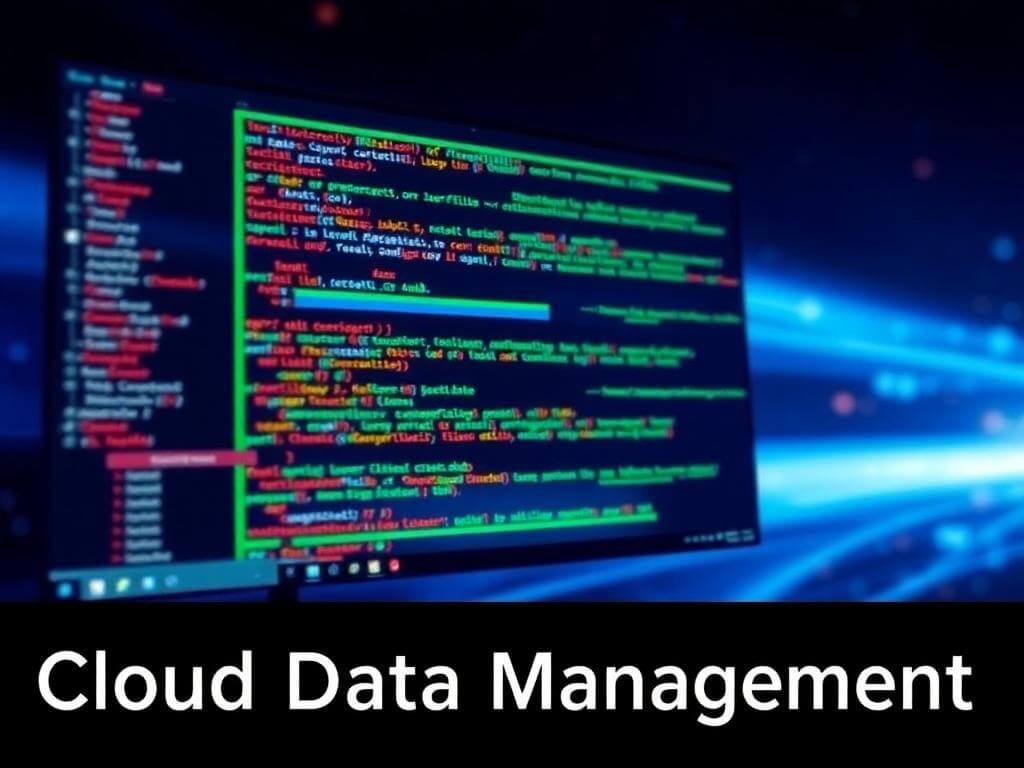With the exponential growth in data generation, organizations are constantly seeking efficient ways to store, manage, and utilize their data. One of the most transformative solutions to emerge is cloud data management. This blog delves into what cloud data management is, its types, and how it differs from traditional data management systems.
What Is Cloud Data Management?
Table of Contents
Cloud data management refers to the process of storing, organizing, and accessing data through cloud-based platforms. It leverages the infrastructure provided by cloud service providers such as Amazon Web Services (AWS), Google Cloud Platform (GCP), and Microsoft Azure to ensure that data is securely stored, easily accessible, and efficiently managed.
Key characteristics of cloud data management include:
Scalability: The ability to scale storage and processing power on demand.
Cost-Effectiveness: Pay-as-you-go pricing models that reduce the need for upfront investments.
Accessibility: Data can be accessed from anywhere with an internet connection.
Resilience: High availability and disaster recovery capabilities.
Cloud data management is pivotal for businesses looking to modernize their operations, enhance collaboration, and gain actionable insights from their data.
Types of Cloud Data Management
Cloud data management encompasses various approaches, each suited to specific organizational needs. Below are the main types:
1. Public Cloud Data Management
Public clouds are managed by third-party providers who offer their infrastructure and services to multiple customers. Data is stored on shared servers but remains isolated through robust security protocols.
Advantages:
Cost-effective for smaller businesses.
Easy to set up and scale.
Providers handle maintenance and updates.
Examples:
AWS S3
Google Cloud Storage
Microsoft Azure Blob Storage
2. Private Cloud Data Management
Private clouds are dedicated environments tailored to a single organization. They can be hosted on-premises or by a third-party provider.
Advantages:
Enhanced control over data.
Higher security and compliance.
Customizable to specific business requirements.
Examples:
VMware Private Cloud
OpenStack
IBM Cloud Private
3. Hybrid Cloud Data Management
A hybrid cloud combines public and private cloud environments, allowing organizations to use both as needed.
Advantages:
Flexibility in workload distribution.
Cost optimization by leveraging public clouds for non-sensitive data.
Enhanced disaster recovery capabilities.
Examples:
Google Anthos
Microsoft Azure Arc
4. Multi-Cloud Data Management
Multi-cloud strategies involve using multiple cloud providers for different purposes. This approach prevents vendor lock-in and enables organizations to leverage the strengths of various providers.
Advantages:
Avoids dependency on a single provider.
Optimized cost and performance by choosing the best provider for specific workloads.
Improved resilience through redundancy.
Examples:
Data stored across AWS, GCP, and Azure for different use cases.
Differences Between Cloud and Traditional Data Management
While traditional data management has been the backbone of businesses for decades, the advent of cloud technology has introduced significant changes. Below is a table summarizing the key differences:
| Aspect | Traditional Data Management | Cloud Data Management |
|---|---|---|
| Infrastructure | Relies on on-premises servers and hardware. | Utilizes virtualized infrastructure from cloud vendors. |
| Scalability | Scaling requires purchasing and installing new hardware. | Offers near-instant scalability based on demand. |
| Cost Structure | High upfront costs for hardware, software, and maintenance. | Pay-as-you-go model, reducing upfront expenses. |
| Accessibility | Limited to on-premises or VPN access. | Accessible from anywhere with an internet connection. |
| Security | Organizations have complete control but must maintain it. | Robust security provided by vendors, with shared responsibility. |
| Maintenance | Requires dedicated IT staff for updates and troubleshooting. | Maintenance is handled by the cloud provider. |
| Disaster Recovery | Complex and expensive secondary systems required. | Built-in disaster recovery options available. |
Pros and Cons of Cloud Data Management
Advantages of Cloud Data Management
Switching to cloud data management offers numerous benefits:
Efficiency: Automated processes streamline data handling.
Collaboration: Multiple users can access and work on data simultaneously.
Analytics: Integration with AI and machine learning tools enables advanced data analysis.
Sustainability: Cloud providers often use energy-efficient data centers, reducing the environmental impact.
Challenges of Cloud Data Management
Although cloud data management offers numerous advantages, it is not without challenges, as organizations can make mistakes that may compromise their cloud security:
Data Security: Misconfigurations can lead to data breaches.
Compliance: Adhering to regulations like GDPR and HIPAA requires careful planning.
Costs: While cost-effective for many, improper usage can lead to unexpected expenses.
Vendor Lock-In: Migrating data from one provider to another can be complex.
See 5 Shocking Cloud security mistakes that could ruin your business
Conclusion
Cloud data management represents a paradigm shift in how organizations handle their data. Its scalability, flexibility, and cost-effectiveness make it an attractive option for businesses of all sizes. However, understanding the different types of cloud data management and how it differs from traditional methods is crucial for making informed decisions.
As technology evolves, cloud data management will continue to play a pivotal role in enabling businesses to stay competitive in a data-driven world. By embracing the cloud, organizations can unlock the full potential of their data and drive innovation like never before.
Why Businesses Trust SecureMyOrg for Comprehensive Network Security
At SecureMyOrg, we uncover and fix all possible security vulnerabilities of mobile and web, while providing solutions to mitigate risks. We are trusted by renowned companies like Yahoo, Gojek and Rippling, and with 100% client satisfaction, you’re in safe hands!






Some of the things people reach out to us for –
- Building their cybersecurity program from scratch – setting up cloud security using cost-effective tools, SIEM for alert monitoring, building policies for the company
- Vulnerability Assessment and Penetration Testing ( VAPT ) – We have certified professionals, with certifications like OSCP, CREST – CPSA & CRT, CKA and CKS
- DevSecOps consulting
- Red Teaming activity
- Regular security audits, before product release
- Full time security engineers.
Relevant Posts

Why Weak Serverless Application Security Puts Your Business at Risk
Weak security in serverless environments often goes unnoticed until it leads to real damage. Misconfigured triggers, broad permissions, and poor visibility can expose sensitive data and disrupt business operations. Understanding where the risks appear is the first step toward building safer, more reliable serverless applications.

What Is Penetration Testing as a Service?
Penetration testing as a service (PTaaS) lets experts simulate real attacks to uncover vulnerabilities before hackers do. This guide explains the process, benefits, and costs, helping businesses strengthen defenses with predictable, ongoing security checks.

How To Inspect Encrypted Traffic Without Breaking Privacy
Network administrators face a challenge: securing systems while respecting privacy. This guide explains how to inspect encrypted traffic without breaking privacy using metadata, anomaly detection, and machine learning ensuring visibility, compliance, and trust.

How to Audit Infrastructure as Code (IaC) for Security Vulnerabilities
Discover how to audit Infrastructure as Code (IaC) for security vulnerabilities with this practical guide. Learn to scan IaC files using tools like Checkov, fix issues like exposed resources, and integrate audits into CI/CD pipelines. Protect your cloud systems from misconfigurations and ensure compliance with clear, actionable steps.

DevSecOps Best Practices: Integrating Security Early in Your CI/CD Pipeline
This article provides a practical guide to embedding security into every stage of your CI/CD pipeline. Learn core DevSecOps best practices like SAST, DAST, dependency scanning, secrets management, and compliance automation to catch vulnerabilities early, foster a culture of shared ownership, and build a secure-by-design development process that accelerates release cycles.

5 Cloud Misconfigurations That Lead to Data Breaches
Cloud misconfigurations are one of the leading causes of data breaches, yet they’re also among the most preventable. From exposed storage buckets to weak IAM policies, attackers exploit these mistakes daily. Learn about the top 5 misconfigurations and how your organization can fix them before they lead to costly data exposure.
